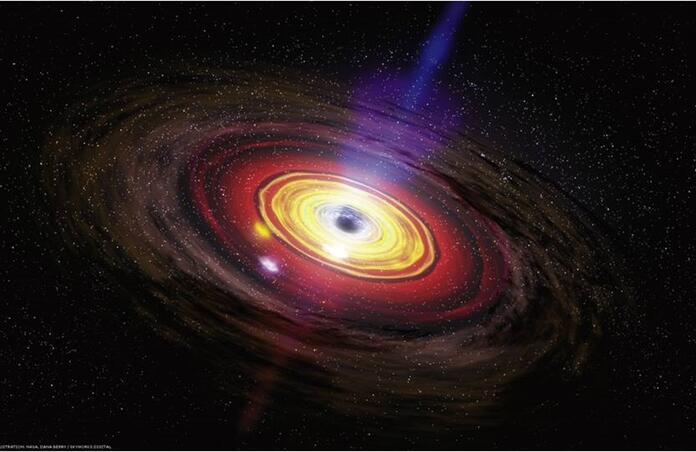Hidden AGN Presents New Avenues in Exploring the Origin of Primordial Black Holes

The Atacama Large Millimeter Array (ALMA) continues to identify notable targets as a team of researchers present their discovery of a rather curious one. This pertains to the identification of a candidate galaxy with an active galactic nucleus (AGN). COS - 87259 is located at an unusually high redshift of Z ≈ 6.853, equivalent to observing what the galaxy appeared like ~13 billion years ago, during the era of recombination. One reason this sighting is particularly exciting is due to the scarcity of active galaxies at this point in time. Presently, it is estimated that these exist with an abundance of ~0.001 per square degree of sky.
The study, led by Ryan Endsley, utilises data from the ALMA 1.5 deg2 COSMOS field, a survey of a relatively narrow region of the sky. There, they managed to find that COS – 87259 was potentially housing an AGN, although present circumstances led to it being hidden. This marks the first ever discovery of such a black hole and opens new possibilities for further detections in the future.
The team present an abnormally strong detection of the CII emission line (158 µm) which they found to correspond to a total infrared luminosity of 9 x 1012 L☉. However, the strength of this line led them to conclude that the galaxy is likely undergoing heavy star formation, converting ~1300 M☉ of stellar material per year. Further detections of the galaxy with the MIPS, PACS and SPIRE instruments suggests that the AGN is in fact obscured by a heavy shroud of interstellar gas and debris. They believe the origin of this to be outflow due to stellar formation.
As such, they estimate the corrected luminosity of the galaxy to be more in the range of 5 x 1013 L☉, suggesting the galaxy is powered by a black hole with 2.6 x 109 M☉.
AGN at redshifts in excess of 6 are of notable interest, due to yet to be understood role in such an early universe. There is no confident consensus regarding why we see such massive objects so early in the universe’s lifecycle. Very few AGNs had been identified at these distances beforehand, all of these being quasars. The study’s leader explains that this suggests that the majority of primordial black holes could have been obscured, just as can be seen in the case of COS – 87259.
Due to the relatively small area sampled by ALMA for this study, the study sheds doubt on preconceptions as to the possible abundance of AGNs at this stage in the universe. Larger surveys should now be note distant and obscured AGNs as a possibility and accommodate for these accordingly. As a result, we will hopefully be getting reports of many more such sightings, providing researchers with a much greater sample of these types of black holes to investigate, and eventually unravel how they came to be.
--
Journal Source: R. Endsley et al, ALMA Confirmation of an Obscured Hyperluminous Radio-Loud AGN at 𝑧 = 6.853 Associated with a Dusty Starburst in the 1.5 deg2 COSMOS Field, Monthly Notices of the Royal Astronomical Society, Vol. 520, No. 3, 2023
Cover Image: NASA/Dana Berry, SkyWorks Digital
